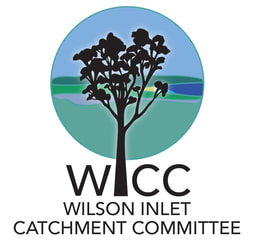Nutrient Efficiency
The Wilson Inlet Grower Group (WIGG) recently met to explore nutrient efficiency with our program agronomist, Graham Mussell. With the price of most fertilisers skyrocketing it has become even more essential to target your paddock requirements with evidence based fertiliser decisions.
Nearly 80% of paddocks within the Wilson Inlet Catchment area contain more Phosphorus (P) than what is required for maximum production. We know this following many years of soil testing. This is largely due to the ongoing application of superphosphate over the decades…often when it was not required. This presents an opportunity for growers to lay off the P for a while, especially with the high prices at the moment. Knowing where your soil nutrients are at is essential in order to utilise excess nutrients in your soil.
Often fertiliser decisions are based on hunches, routine or very limited soil testing. Some practitioners base their soil testing on only a few soil cores. The Department of Primary Industries and Regional Development (DPIRD) recommends growers take a minimum of 30 cores to represent one soil sample.
The data which comes back from a soil test will make most growers scratch their heads, looking something like this….
Nearly 80% of paddocks within the Wilson Inlet Catchment area contain more Phosphorus (P) than what is required for maximum production. We know this following many years of soil testing. This is largely due to the ongoing application of superphosphate over the decades…often when it was not required. This presents an opportunity for growers to lay off the P for a while, especially with the high prices at the moment. Knowing where your soil nutrients are at is essential in order to utilise excess nutrients in your soil.
Often fertiliser decisions are based on hunches, routine or very limited soil testing. Some practitioners base their soil testing on only a few soil cores. The Department of Primary Industries and Regional Development (DPIRD) recommends growers take a minimum of 30 cores to represent one soil sample.
The data which comes back from a soil test will make most growers scratch their heads, looking something like this….
Fortunately, DPIRD has developed a free nutrient calculator which is available on their website (just google ‘nutrient calculator DPIRD’). DPIRD formulated this calculator based on numerous scientific trials of pasture growth and its relationship to soil test data. When you plug your raw data into the calculator, your data (above) will get indexed against the results of these scientific trials so you know how your soil nutrient levels compare to your pasture requirements. If it comes back GREEN this means that these nutrients or soil characteristics are not limiting your pasture production based on your chosen yield target (90% in this case). A RED highlight means this is a limiting factor in your pasture production. In this case that is pH.
Graham will be working with our WIGG members over the coming weeks to help them create their own fertiliser plans using freely accessible tools like the nutrient calculator. There are also calculators available for liming and stocking rates. Visit dpird.wa.gov.au for more resources.
WIGG is funded in part by the Western Australian Government’s State Natural Resource Management Program.
Graham will be working with our WIGG members over the coming weeks to help them create their own fertiliser plans using freely accessible tools like the nutrient calculator. There are also calculators available for liming and stocking rates. Visit dpird.wa.gov.au for more resources.
WIGG is funded in part by the Western Australian Government’s State Natural Resource Management Program.

